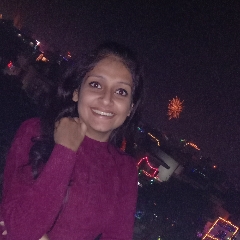Question 1 :
How many dead centres are there in one cycle of steam engine ?
Question 2 :
A cyclic heat engine does 50kJ of work per cycle. If efficiency of engine is 75%, the heat rejected per cycle will be:
Question 3 :
Which of the following is correct for the efficiency of a heat engine:
Question 7 :
$660\ J$ heat energy is supplied to a solid of mass $275\ g$. When its temperature rises by $1^{o}C$, calculate specific heat capacity of the solid :
Question 8 :
Calculate the amount of heat energy required to raise the temperature of $2\  g$ of mercury (Specific heat Capacity $0.12 J g^{-1} \ ^{o}C^{-1}$) from $10^{o}C$ to $30^{o}C$ :
Question 9 :
A polyatomic gas $\left ( \gamma =\dfrac{4}{3} \right )$ is compressed to $\dfrac{1}{8}$ of its volume adiabatically. If its initial pressure is P, the new pressure will be<br>
Question 10 :
A refrigerator is a device which works on the principle that evaporation of a liquid gives a cooling effect.
Question 11 :
Heat flows between two bodies due to difference in their temperature.
Question 14 :
Write the expression for the heat energy $Q$ received by $m$ kg of a substance of specific heat capacity $c \ J kg^{-1} K^{-1}$ when it is heated through $\Delta t^{\circ} \ C$
Question 15 :
During what kind of process is there no change in internal energy?
Question 16 :
Two liquids A and B of equal volumes have their specific heats in the ratio 2 : 3. If they have same thermal capacity, then the ratio of their densities is<br>
Question 17 :
When water freezes, its molecules take on a more structured order. Why doesn't this contradict the Second Law of Thermodynamics? 
Question 18 :
Assertion: The isothermal curves intersect each other at a certain point.
Reason: The isothermal changes takes place rapidly, so the thermal curves have very little slope.
Question 20 :
The volume of $1 m^3$ of gas is doubled at atmospheric pressure. The work done at constant pressure will be
Question 21 :
Which of the following is true in the case of a reversible process :<br/>
Question 23 :
In an experiment, $17\ g$ of ice is used to bring down the temperature of $40\ g$ of water at $34^{\circ}C$ to its freezing temperature . The specific heat capacity of water is $4.2 J g^{-1} K^{-1}$. Calculate the specific  latent heat of ice. State one important assumption made in the above calculation<br/>
Question 24 :
It is given that a thermodynamic system changes from state A to state B and then back to state A. It is given that the process is reversible. Choose the correct statements.
Question 28 :
The process in which the internal energy of the system remains constant is :<br/>
Question 30 :
A process is approximately reversible. In real life scenarios, this happens only when:
Question 31 :
A heater of power $P\ W$ raises the temperature of m kg of a liquid by $\Delta T K$ in time $t\ s$. Express the specific heat capacity of liquid in terms of above data.
Question 32 :
A new soft drink bottle is opened, allowing gas to escape into the atmosphere. As the gas escapes, its degree of disorder increases. Identify by which of the following law this can be explained ?
Question 33 :
Which of the following laws of thermodynamics leads to the inference that it is difficult to convert whole of heat into work :<br/>
Question 34 :
In which of the following processes all three thermodynamic variables, that is, pressure, volume and temperature can change ?<br/>
Question 35 :
<p class="wysiwyg-text-align-left">That 'Entropy of a system increases in all spontaneous processes' is  known as</p>
Question 36 :
Assertion: In the refrigerator, the evaporator is located in the freezer section.
Reason: In the heat pump, the evaporator is located outside the room which is to be heated.
Question 38 :
A heat engine receives $150$ Joules of heat energy and performs $70$ Joules of work. If heat loss in the surrounding is zero. Find out by what value does the internal energy of the system change?
Question 39 :
Which of the following statement is true as per the second law of thermodynamics for an isolated, ordered system?<br/>
Question 42 :
A gas may expand either adiabatically or isothermally. A number of P-V curves are drawn for the two process over different ranges of pressure and volume. It will be found that;
Question 44 :
In a reversible process, system goes from an initial state A to a final state B. Which of the following is true?
Question 45 :
Match the following:<br><table class="wysiwyg-table"><tbody><tr><td>List 1</td><td>List 2</td></tr><tr><td>a)Reversible Process</td><td>1)Temperature remains constant</td></tr><tr><td>b)Isothermal Process</td><td>2) Combustion reaction of mixture of petrol and air</td></tr><tr><td>c)Irreversible Process</td><td>3)No heat flow between the system and surrounding</td></tr><tr><td>d)Adiabatic Process</td><td>4)Temperature change in atmosphere</td></tr></tbody></table>
Question 47 :
Compressed air in the tube of a wheel of a cycle at normal temperature suddenly starts coming out from a puncture.The air inside:
Question 48 :
In which of the following process the system and surrounding does not comes back to original state after the process is complete?


































